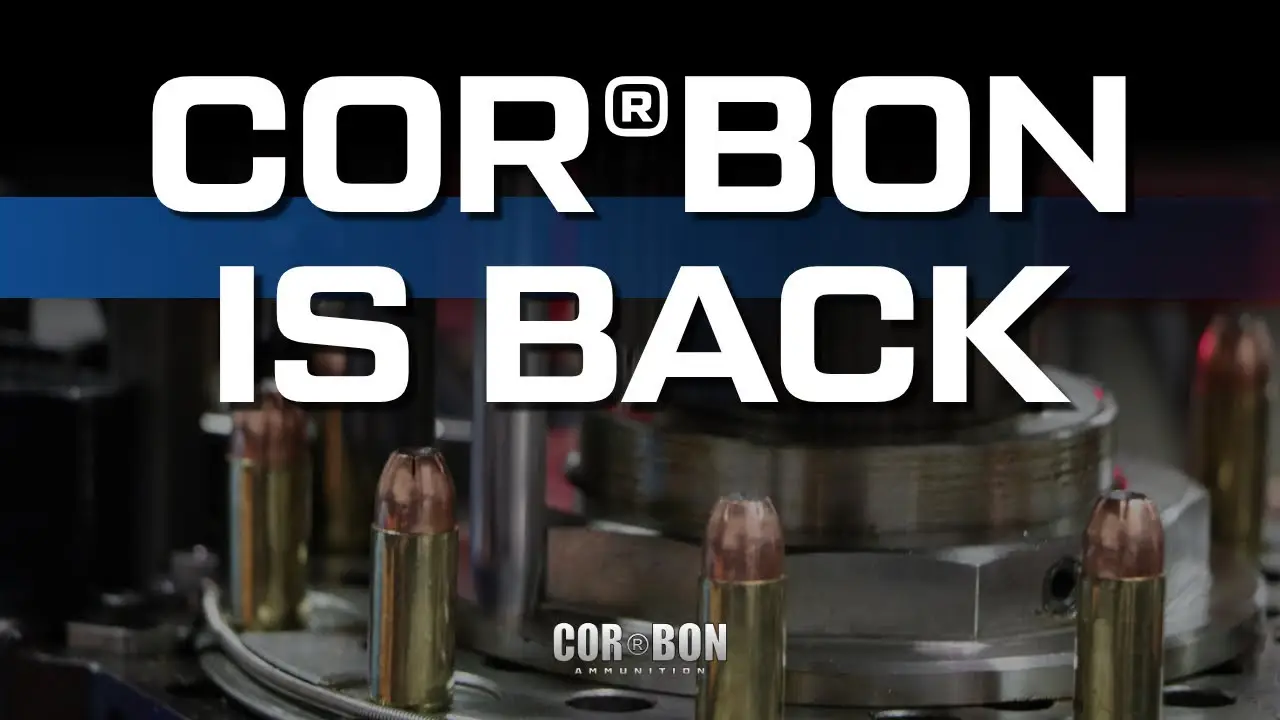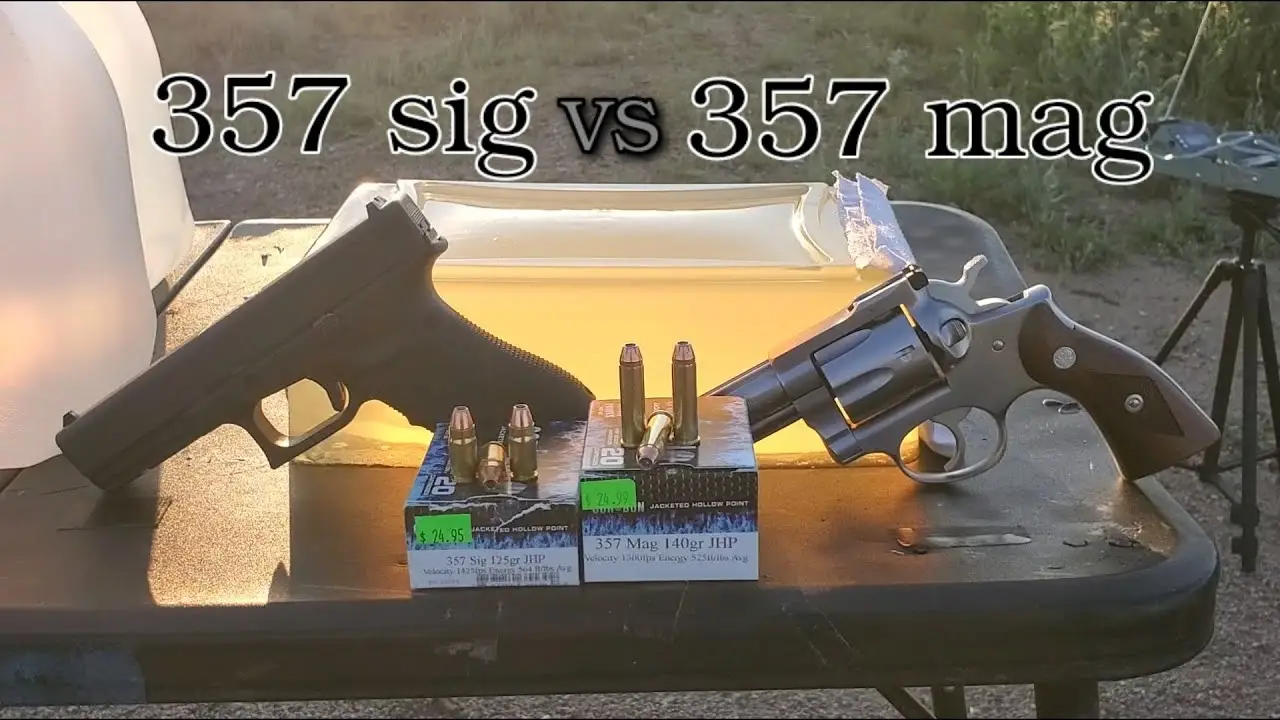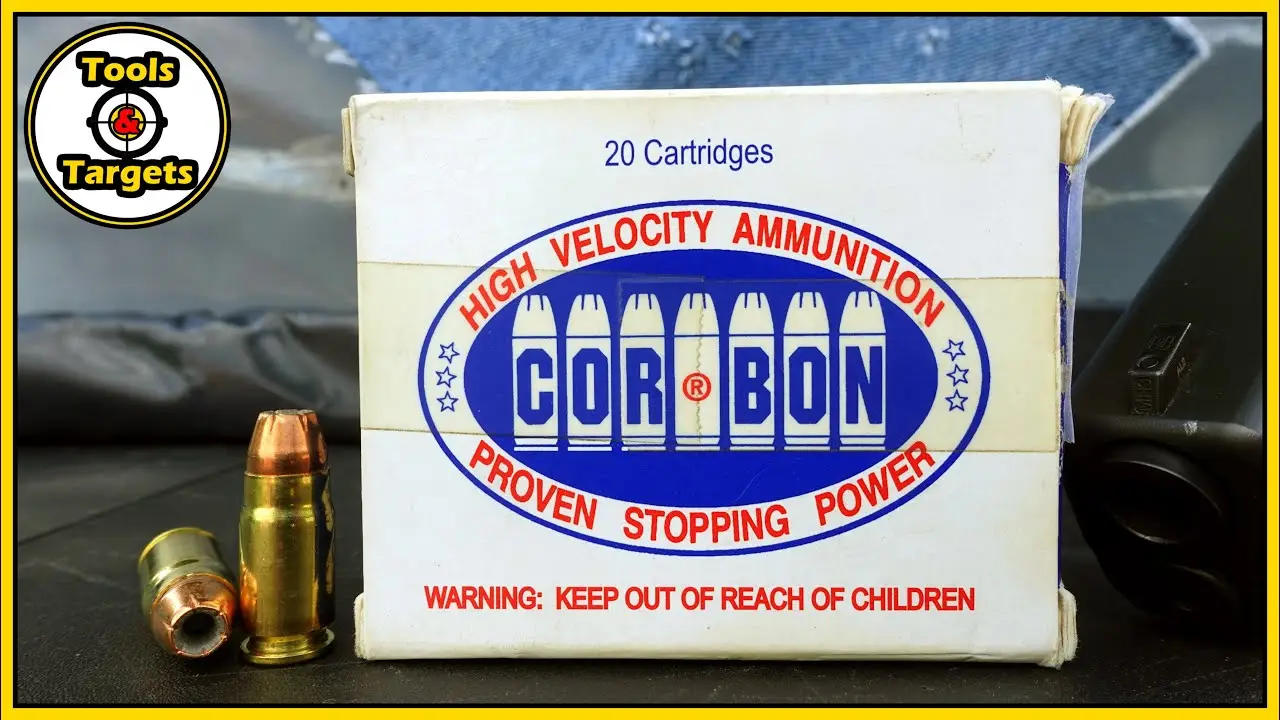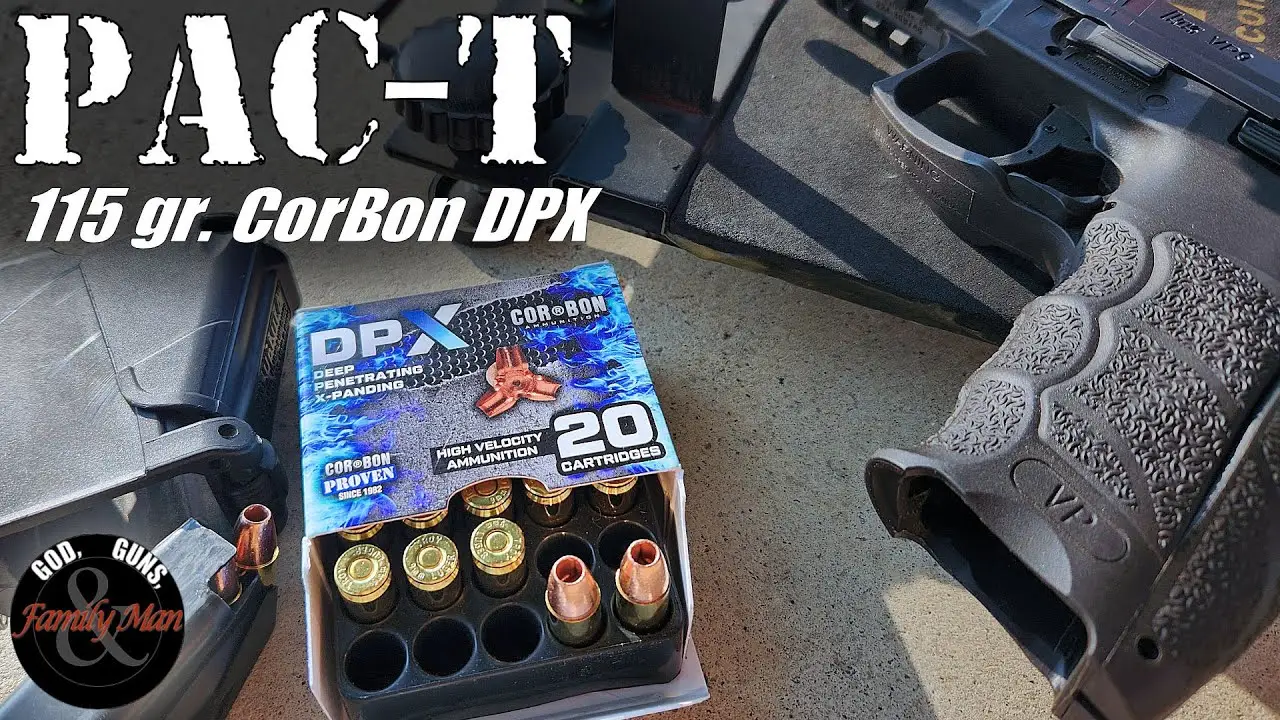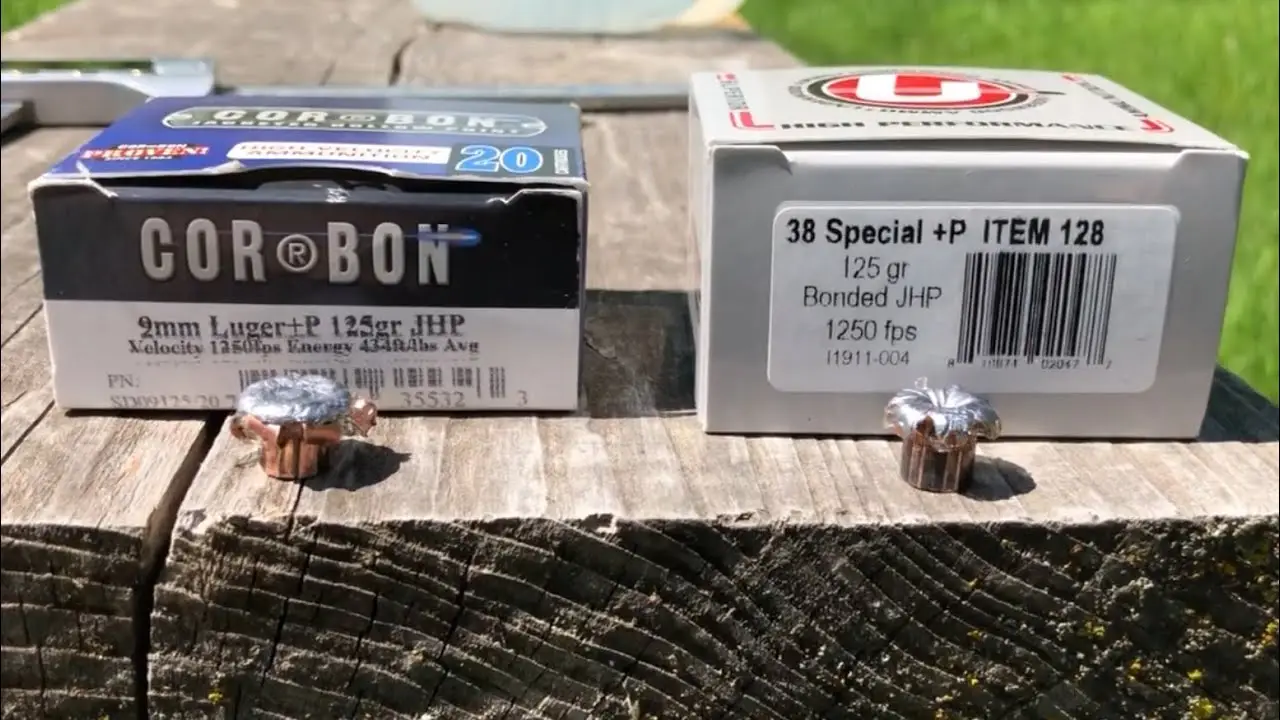The CorBon DPX 9mm +P (115-grain solid copper expander) was tested in ballistic gel to evaluate its performance from two common carry guns: a compact Canik METE MC9 with a 3.1-inch barrel and a full-size Glock 17 with a 4.5-inch barrel. Additionally, the test used calibrated Clear Ballistics gel blocks and a heavy clothing barrier. A LabRadar chronograph recorded velocity for every shot. Overall, the test measured penetration depth, expansion, weight retention, and velocity consistency.
Test Setup and Conditions
The test took place outdoors on a hot day. First, each handgun fired several rounds to calculate five-shot averages. Extreme spread and standard deviation were recorded. Then, one shot from each gun passed through the clothing barrier into the gel blocks to measure terminal performance. This setup allowed a direct comparison of short and long barrels under realistic carry conditions.
Velocity and Consistency
The measured velocities closely matched the manufacturer’s advertised numbers. The Canik METE MC9 (3.1″) had a five-shot average of 1,218 ft/s, with an extreme spread of 27 and a standard deviation of 11.2 ft/s. Meanwhile, the Glock 17 (4.5″) averaged 1,270 ft/s, with an extreme spread of 9 and a standard deviation of 3.8 ft/s. As expected, the longer barrel produced roughly 50 ft/s more than the shorter barrel. Overall, the DPX showed excellent consistency across both guns.
Terminal Performance in Gel
Both bullets expanded immediately after passing through the heavy clothing barrier. Consequently, they created wide, spiraling wound channels through the first gel block and penetrated well into the second. Penetration depth measured 16.5 inches for the MC9 and 17.5 inches for the G17. Expansion diameters ranged from 0.673″ to 0.688″. Both bullets retained their full weight of 115 grains. In addition, the solid copper design prevented jacket separation or fragmentation, ensuring reliable performance.
Wound Channel Analysis
Inside the gel, each bullet produced a clean entry and a consistent spiral disruption. Although slight differences in initial disruption appeared, likely due to petal peelback variations, overall performance remained consistent. Expansion stayed reliable even after passing through the heavy clothing barrier. Moreover, the wound channels were broad and continuous, without irregularities or clogging.
Practical Implications for Carry
The CorBon DPX 9mm +P balances penetration and expansion effectively. Both compact and full-size barrels produced penetration within the FBI’s recommended range, avoiding excessive depth. Expansion was consistent across both platforms, making the DPX a versatile choice for shooters who use different carry guns. Furthermore, tight velocity spreads improve shot predictability and terminal effectiveness.
Since the DPX is a +P round, it generates slightly higher recoil than standard 9mm loads. Firearms must be rated for +P use. Therefore, regular practice with this ammunition is recommended to maintain control and accuracy.
Strengths and Considerations
The DPX performs well under heavy clothing and maintains 100% weight retention. Velocity is consistent, and expansion is reliable. These traits make it a strong option for defensive carry. However, the main consideration is the higher recoil, which requires practice and proper firearm selection.
Conclusion
The CorBon DPX 9mm +P 115gr performed exceptionally in gel testing. Both short and long barrels produced terminal results within the ideal defensive range: reliable expansion, 16–18 inch penetration, full weight retention, and tight velocity consistency. Overall, shooters seeking a barrier-resistant, all-copper +P round that performs consistently across different firearms will find the DPX an excellent choice.

John Doe
Lorem ipsum dolor sit amet consectetur adipiscing elit dolor

